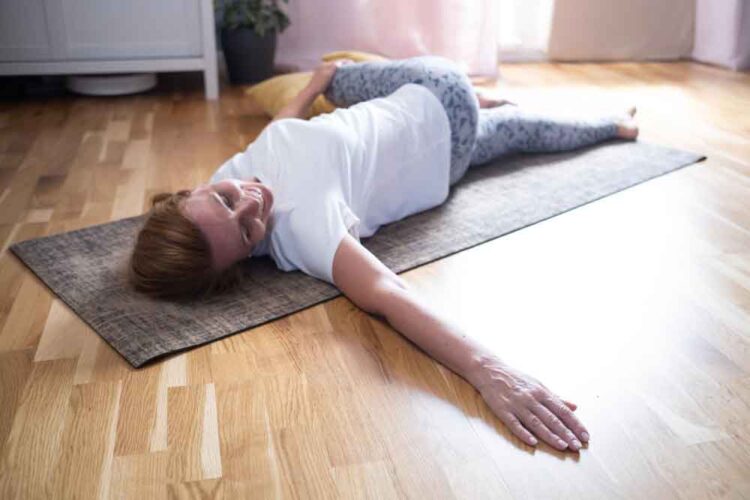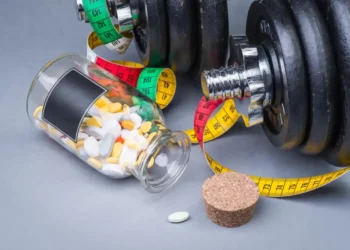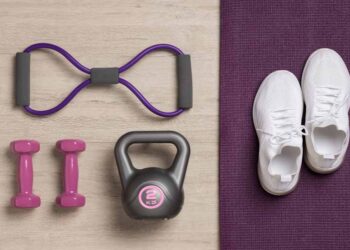Did you know you can boost your fitness by adding active recovery to your routine? Active recovery is more than just taking a break. It means doing light exercises that boost blood flow, ease tension in muscles, and help clear out waste from your body.
In this article, we’ll cover what active recovery is, its perks, how to do it right, and its importance for those who want to improve their fitness. Ready to make gains while avoiding injuries? Let’s get into active recovery!
Key Takeaways
- Active recovery involves low-intensity exercises that promote blood flow and aid in the body’s natural recovery process.
- Benefits of active recovery include improved muscle repair, reduced muscle soreness, and enhanced mental well-being.
- Incorporating active recovery into your routine can optimize your gains, prevent injuries, and boost overall performance.
- There are various ways to incorporate active recovery, such as lowering workout intensity, focusing on mobility exercises, and engaging in long-slow distance activities.
- Finding the right balance between training and recovery is crucial for optimal fitness gains and injury prevention.
What Is Active Recovery and Why Should You Practice It?
Active recovery is a key part of fitness routines. It includes easy exercises that boost blood flow and help your muscles. This kind of recovery is better than doing nothing because it keeps you moving while healing.
It helps your muscles to heal and get stronger. This happens because nutrients and oxygen reach your muscles faster. It’s a good way to reduce muscle soreness and get better more quickly.
Supporting Scientific Research on Active Recovery
“Active recovery has been proven to make fitness better. It helps muscles store energy, lowers stress, and boosts heart and lung health.” – Dr. Sarah Thompson, Sports Science Expert
Active recovery is good for your mind too. It lowers stress and anxiety, making you feel better. It helps keep your spirits up during your health journey.
This type of recovery also prevents injuries by keeping your joints and muscles working smoothly. It avoids stiffness and makes your body work better.
Good activities for active recovery are easy jogging, yoga, swimming, and light cycling. These are gentle on your body but keep you moving forward in your health goals.
Using active recovery can really change how you do fitness. It boosts muscle healing, cuts down on injuries, and lifts your performance. So, don’t forget the value of active recovery in your fitness plan!
How to Incorporate Active Recovery into Your Routine
Looking to add active recovery to your workout plan? There are many ways to go about it. Lower the workout intensity, do more mobility and activation exercises, and add long-slow distance activities. These steps help bring the benefits of active recovery into your routine.
Lowering the Intensity
Start by turning down the intensity of your exercises. Instead of going all out, aim for a 70-75% effort. This gives your body time to recover. At the same time, it keeps you active and helps blood flow.
Mobility and Activation Exercises
Try focusing on exercises that boost mobility and activate muscles. These exercises target what’s weak or off-balance in your body. They make your movements smoother and lower the chance of getting hurt. Include stretches and activation moves like lunges, twist exercises, and foam rolling in your routine.
Long-Slow Distance Activities
Consider adding long-slow distance exercises to your plan. This routine covers activities that warm you up, keep you moving gently, and help you cool down properly. Doing this supports blood flow, eases your muscles, and speeds up your recovery.
Having a few favorite active recovery routines is a good idea. It keeps things interesting and pushes your body in new ways. Look for activities that you like and that work various muscle groups. This will make your fitness journey better and more complete.
| Active Recovery Methods | Benefits |
|---|---|
| Lowering intensity | – Promotes blood flow – Allows for muscle recovery – Reduces muscle soreness |
| Mobility and activation exercises | – Targets weaknesses and imbalances – Improves overall movement – Reduces the risk of injuries |
| Long-slow distance activities | – Promotes blood flow and muscle relaxation – Aids in the recovery process – Enhances overall fitness progress |
Active Recovery vs Rest Day: Understanding the Difference
Both active recovery and rest days are a vital part of healing for our bodies. Still, they work in different ways to help us recover. Active recovery means doing light exercises that boost blood flow. This helps in muscle repair, lessens soreness, and brings mental calm. Rest days, on the other hand, mean total relaxation. You avoid all physical activity to let your body recover without any strain.
Active recovery is super for athletes and folks aiming to get fitter. It lets athletes work out lightly, improving their stamina and heart health. It does this without pushing too hard. This method also fights off muscle stiffness, which cuts down on injury risks.
Active recovery keeps you moving while you recover. It does this by keeping your muscles warm and your blood flowing. This process helps your body get rid of harmful substances, which quickens recovery.
On the flip side, rest days are key for giving your body a complete break. During these days, your body refuels, fixes damaged tissues, and grows new muscle. Rest days are essential for complete recovery, avoiding overtraining, and staying mentally fresh.
Both types of recovery have their special advantages. It’s crucial to balance them for the best fitness gains and to dodge injuries. Adding active recovery but also taking regular rest days is a perfect combo. It keeps you active yet allows your body the time it needs to repair. Always pay attention to how you feel and adjust your rest and recovery times based on your body’s feedback.
The Importance of Active Recovery for Athletes
For athletes, active recovery is a game-changer. It keeps their joints flexible and helps avoid muscle problems. This is vital for reaching peak performance safely.
Active recovery isn’t just about the body; it’s great for the mind too. It helps athletes relax mentally after tough workout sessions. This refreshes their body and mind, making them better at what they do, both in sports and everyday life.
Whether you go for active recovery or rest days, remember recovery is key. It’s the cornerstone of any fitness plan. Prioritizing it helps you make the most of your efforts. And it keeps your fitness journey enjoyable for the long haul.
Conclusion
Active recovery is a great thing for athletes and people who love fitness. It involves doing light exercises and movements. This helps your muscles get better, lowers injury chances, and boosts how well you perform.
Getting the right mix of workout and recovery is important. It’s key to listen to what your body tells you. This way, you can change your active recovery to fit what your body needs.
Adding active recovery along with rest days helps avoid overtraining. It makes your fitness journey fun and lasting. By taking care of your body and mind, you can reach your fitness dreams.
Remember, active recovery isn’t only for pros. It’s for anyone who wants to get fitter and feel better. So why not start today? By doing active recovery, you’ll see big benefits for your health and fitness!














